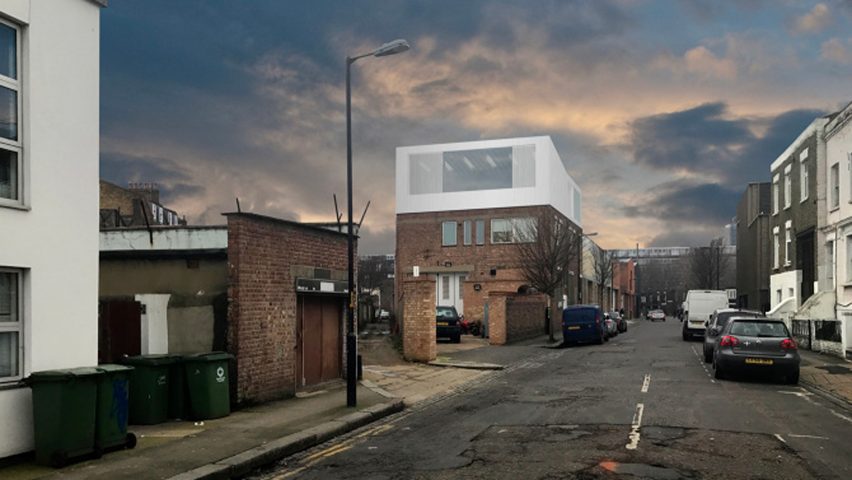Anish Kapoor's plans to add a roof extension to his studio in London's Camberwell may be scuppered by complaints that it will block light and create "prison-like" homes for neighbours.
Plans for the corrugated aluminium-covered addition to the artist's studio by London architecture studio Caseyfierro Architects have been submitted to planners at Southwark Council in March.
But local residents are mounting a campaign against Kapoor's extension, which they believe will block out views of the sky and natural light from their homes.
The "upset and dismayed" residents have set up a Change campaign titled Stop Anish Kapoor stealing our light and colour! which has so far attracted 158 signatures opposing the artist's bid to increase the scale of his studio on Farmers Road.
Objectors say the addition will create a "claustrophobic, prison-like feel, with a real effect on our light and view".
"Across London residents are being rode rough shod by councils who value commerce over community. This is one example," reads the campaign page.
"Recently Anish Kapoor has put in a plan to Southwark Council to build another floor on top of his studio that will block the light and view from the back of the properties," it continues.
"This is the peaceful side of the houses, where you can appreciate the sun when it shines and have a view of the sky over South London. A welcome respite from the busyness of the main road. If you live and work in a city it's the small thing that is so precious."
Those challenging the project are suspicious of "foul play" in the planning system, believing special concessions are being made for the artist.
Text on the Change petition page claims planners are meeting behind closed doors to discuss the project and no public consultation has been offered. However, a list of neighbour consultation replies has been included in the planning request.
"Living in a conservation area, us residents have to adhere to strict regulation, aiming to protect the environment where we live with our neighbours," reads the Change page.
"It doesn't seem like this applies when a rich and famous artist, who has a light industrial unit bordering our road could potentially ruin this old period London conservation area."
Lengthly comments opposing the project have also been left on South Council's planning portal.
Kapoor converted the former brick dairy factory into a studio over 20 years ago. London-based architects Michael Casey and Victoria Fierro carried out several rounds of works on the studio, completing its latest modification to create 3,100 square metres of workspace for the artist last year.
The architects declined to comment on its latest project for Kapoor: "We feel it inappropriate to make any comment at this juncture, the proposal is with the local planning authority who undertake consultation as part of normal planning process," said Casey.
Kapoor, who was the most popular artist on the inaugural Dezeen Hot List, has attracted considerable attention in recent years for projects including his latticed sculpture for the London Olympics site – which was later controversially converted into Europe's largest and tallest tunnel slide by Belgian artist Carsten Höller.
The Indian-born British artist also obtained exclusive rights to the world's blackest black pigment, making him the only person allowed to paint using the colour.
Following the realisation, British artist Stuart Semple created the "world's pinkest pink" pigment. Semple has made the pigment available to all artists bar Kapoor – who is legally banned from using the colour in his work.
Kapoor has now reportedly got his hands on the bright cerise pigment, posting a provocative picture to his instagram account of his middle finger dipped in the colouring.
Among the artist's most recent sculptures is a continuously spiralling pool of water installed in the Brooklyn Bridge Park.

